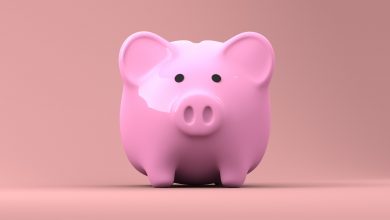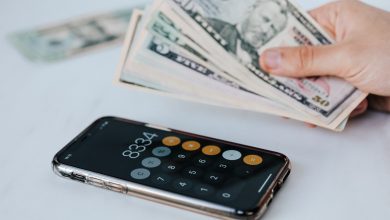
For those that have student debt and are worried about how to pay premiums each month, there is good news coming from the federal government. Due to the coronavirus pandemic, ensuing state shutdowns and general social distancing, many are currently out of a job and have no idea when they will return to the workforce. But after weeks of negotiations, the government has agreed on a massive stimulus plan which will help Americans in need and severely lessen the burden of student loans.
Initially, the pause on student loan payments was for 60 days. Starting on March 23, 2020, loan borrowers could put their payments on hold. The interest rates on those loans also dropped to zero percent during that time.
But the new government stimulus package, known as the CARES Act, grants many more benefits to borrowers of student loans. Here are the key points concerning student loan forgiveness:
- Loans payments can be paused until September 30, 2020.
- No interest will accrue on student loans through September 30, 2020.
- Your employer has the option to pay up to $5,250 of your student loans tax-free.

Continuing to Pay Has Great Advantages
While payments can be put on hold, that does not prevent borrowers from continuing to pay down their loans if they choose to. And if you can afford to do it, the next six months provide an opportunity for normal payments to go 100% towards the principle amount of the loan, as there is zero interest being charged during this time.
What’s in the Government Stimulus Package?
For weeks the government negotiated a stimulus package to help keep the economy from completely crashing, as well as to relieve families that have been adversely affected by the coronavirus. The government finally reached an agreement for a $2 trillion package.
Here are the key points from the 880-page stimulus package:
- Americans will receive close to $900 billion in payments.
- Checks for $1,200 will be sent to individual taxpayers who made less than $75,000.
- Checks for a little less than $1,200 will be sent to individuals who made between $75,000 and $100,000.
- No checks will be given for individuals who make over $100,000 per year.
- For those filing jointly, a check for $2,400 will be sent out if your combined income is less than $150,000.
- Families will receive an additional $500 per child.
- Unemployment assistance will be increased by $600 per week for up to four months.
- Small businesses can receive loans that will be forgiven if they do not lay off workers and continue to send them paychecks throughout the crisis. There has been $350 billion allocated for these loans.
- Big businesses have $500 billion allocated to them, with $425 billion going to struggling corporations and $75 billion going to specific industries, such as airlines.
- State and local governments are receiving $150 billion to deal with virus related expenses.
- The healthcare industry is receiving $100 billion to help buy crucial supplies.

Student Loan Forgiveness on a Larger Scale
While the halt on payments and interest is great news for those with student loan debt, what if people still can’t pay those bills after September 30th? Many families will be worse off financially due to long stretches without employment. While the country is recovering, families that are strapped with large student loan bills and have seen their employment hours lessened may not be able to keep up once payments are resumed.
The worry is that, even if payments get pushed back, the country is likely in the midst of a recession. The expected, or current, recession should not look like the Great Recession of 2008, but we still do not have any idea how long it might last. To ensure that families don’t get too far behind payments, many in the government are calling for student loan forgiveness on a larger scale, with varying amounts.
Many democrats believe that the longer reprieve on payments should only be the start and have suggested largescale debt forgiveness on top of the pause in monthly bills.
Presidential candidate Joe Biden is one who has spoken out, suggesting that a minimum of $10,000 of student loans be forgiven for each person. Biden said the following on Twitter:
“We should forgive a minimum of $10,000/person of federal student loans, as proposed by Senator Warren and colleagues. Young people and other student debt holders bore the brunt of the last crisis. It shouldn’t happen again.”
Joe Biden on Twitter
Democrats in both the House and the Senate are hoping for even more relief. Numerous senators proposed that the Education Department (ED) should cancel $30,000 of student debt for each person.
Minnesota democrat Ilhan Omar and Massachusetts democrat Ayanna Pressley have gone as far as to introduce legislation called the Student Debt Relief Act. The bill calls for suspended loan payments and $30,000 of debt forgiveness for borrowers. The Student Debt Relief Act also would stop the government from taking wages and Social Security checks from defaulted borrowers.
In a statement, the two lawmakers said the following:
“During this public health emergency, no person should have to choose between paying their student loan payment, putting food on the table or keeping themselves and their families safe and healthy.”
Bernie Sanders has been leading the charge for total debt forgiveness, as free tuition is a key part of the platform for his presidential campaign. Other progressive democrats have joined Sanders in calling for complete debt forgiveness to those with student loans.

American Debt Crisis
According to the Federal Reserve Bank of New York, overall household debt has never been more of a crisis for American families. In the fourth quarter of 2019, the total debt balances of all households increased by $193 billion.
The increase was 1.4% more than the previous quarter and put the total national household debt at $14.16 trillion. In their findings, the Federal Reserve went on to say that debts have been steadily on the rise for the past five years in aggregate. In nominal terms, the total debt is now $1.5 trillion higher than it was in its previous peak, the third quarter of 2018. Overall, household debt was 26.8% higher in the fourth quarter of 2019 than it was in the second quarter of 2013.
Total Student Loan Debt
In the four quarter of 2019, the total amount of student loan debt in the country stood at $1.51 trillion. Of that debt, 11.1% was 90+ days delinquent, rising from 9.2%.



